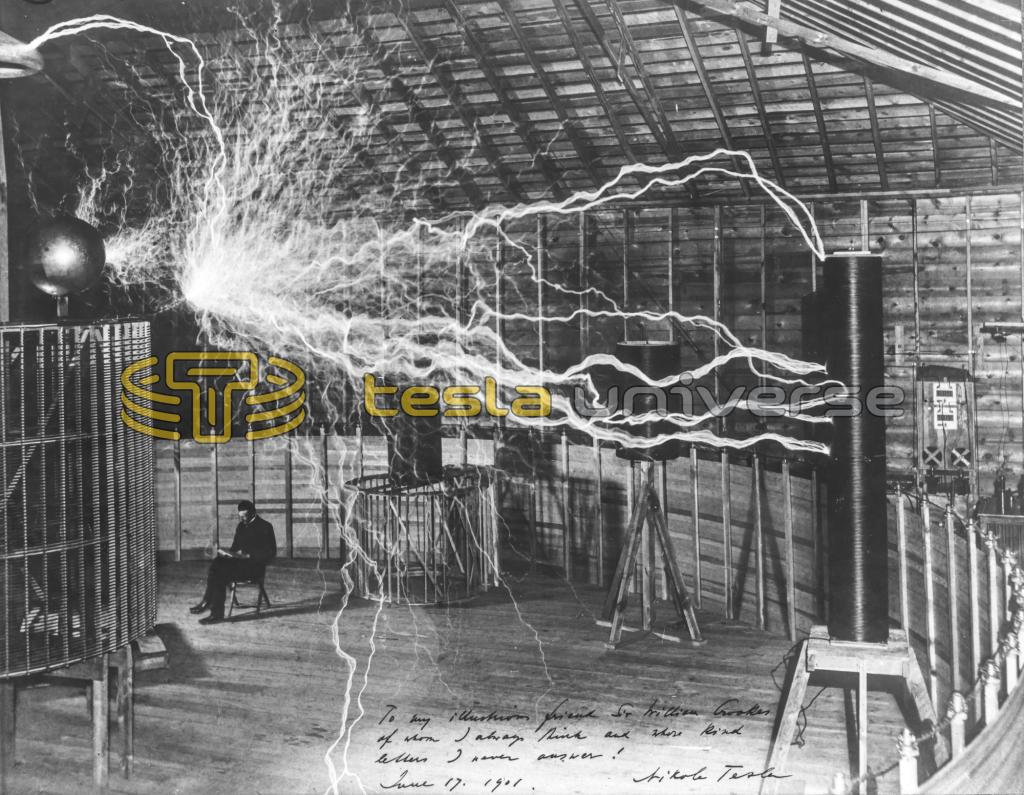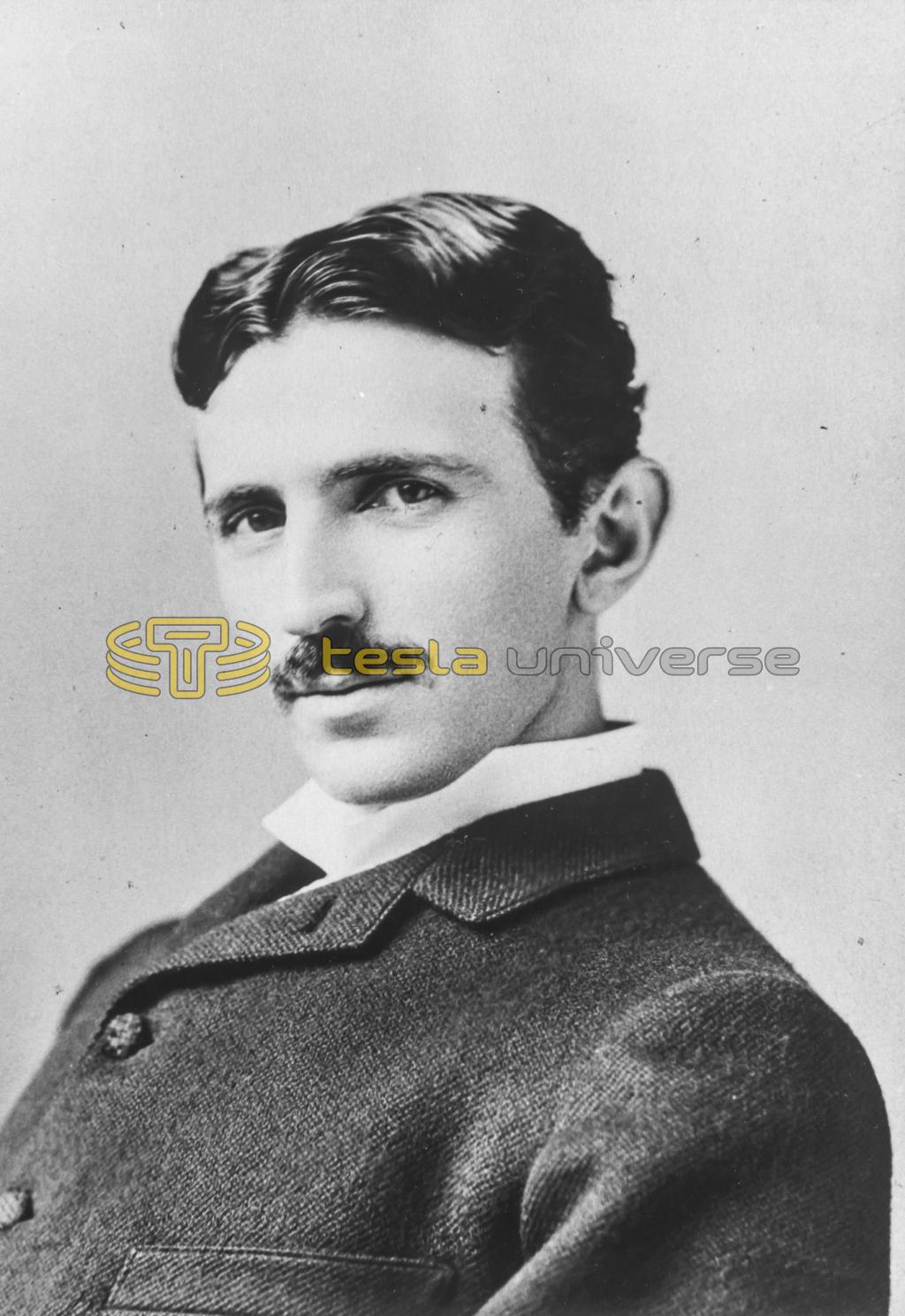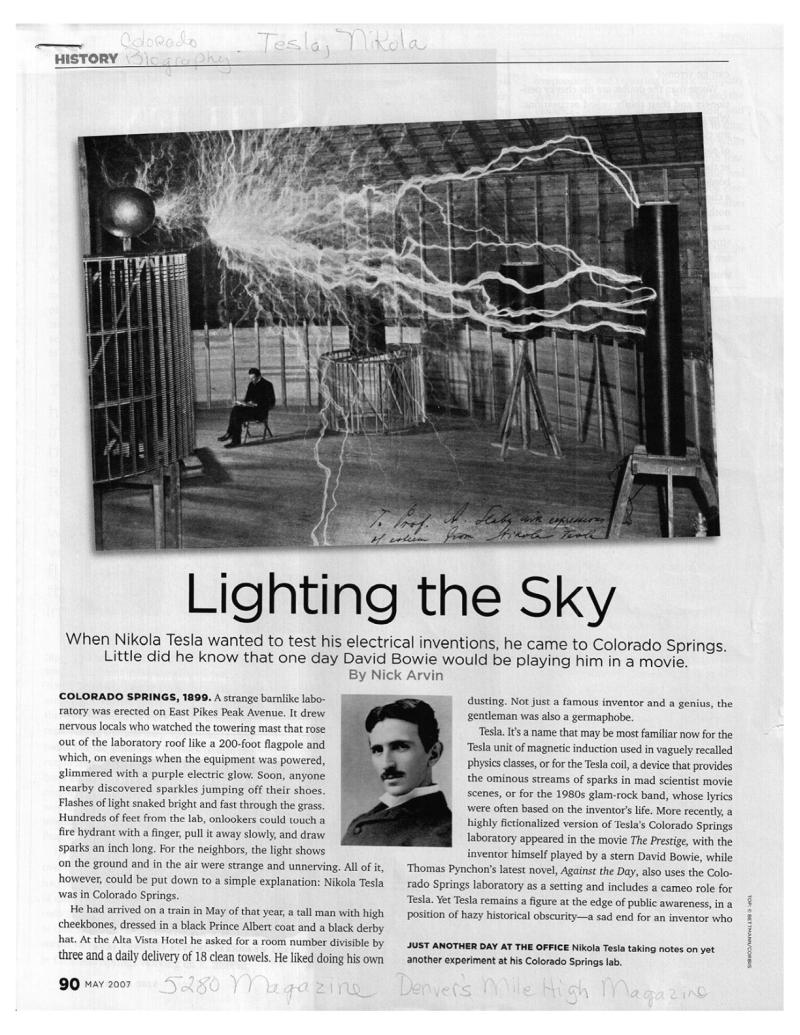
Nikola Tesla Articles
Lighting the Sky
When Nikola Tesla wanted to test his electrical inventions. he came to Colorado Springs. Little did he know that one day David Bowie would be playing him in a movie.
Colorado Springs, 1899. A strange barnlike laboratory was erected on East Pikes Peak Avenue. It drew nervous locals who watched the towering mast that rose out of the laboratory roof like a 200-foot flagpole and which, on evenings when the equipment was powered, glimmered with a purple electric glow. Soon, anyone nearby discovered sparkles jumping off their shoes. Flashes of light snaked bright and fast through the grass. Hundreds of feet from the lab, onlookers could touch a fire hydrant with a finger, pull it away slowly, and draw sparks an inch long. For the neighbors, the light shows on the ground and in the air were strange and unnerving. All of it, however, could be put down to a simple explanation: Nikola Tesla was in Colorado Springs.
He had arrived on a train in May of that year, a tall man with high cheekbones, dressed in a black Prince Albert coat and a black derby hat. At the Alta Vista Hotel he asked for a room number divisible by three and a daily delivery of 18 clean towels. He liked doing his own dusting. Not just a famous inventor and a genius, the gentleman was also a germaphobe.
Tesla. It's a name that may be most familiar now for the Tesla unit of magnetic induction used in vaguely recalled physics classes, or for the Tesla coil, a device that provides the ominous streams of sparks in mad scientist movie scenes, or for the 1980s glam-rock band, whose lyrics were often based on the inventor's life. More recently, a highly fictionalized version of Tesla's Colorado Springs laboratory appeared in the movie The Prestige, with the inventor himself played by a stern David Bowie, while Thomas Pynchon's latest novel, Against the Day, also uses the Colorado Springs laboratory as a setting and includes a cameo role for Tesla. Yet Tesla remains a figure at the edge of public awareness, in a position of hazy historical obscurity — a sad end for an inventor who was once as famous as Thomas Edison.
In the 1890s, Tesla devised the system of alternating current — AC — power generation and transmission that went head-to-head with Edison's direct-current system, and won. It won because it was the superior system, and for that reason we still use it today. The lights you flip on in the morning, the toaster you burn your toast in, the presses that print this magazine all work because of Tesla's AC system. In the 1890s he famously used AC to power the electrical grid behind the astounding display of lights at the Chicago World's Fair, and he designed the hydroelectric plant at Niagara to harness the falls for AC power. He also did pioneering work in X-rays, and he demonstrated the world's first remote-controlled vehicle, a boat that he steered around a tank of water in a private auditorium in Madison Square Garden before a select group of investors that included J.P. Morgan.
At 42 years old, Tesla was at the height of his fame when he arrived in Colorado Springs and told reporters there he intended to work on his system for transmitting wireless telegraphs — later ca!led radio. But the gentleman inventor denied the rumor that he would attempt to send signals from Pikes Peak to the top of Longs Peak, a couple hundred miles to the north, or that he would send signals to Mars. He did, however, intend to transmit wireless signals from Pikes Peak to the 1900 Paris Exhibition.
Tesla was unflinching in his pursuit of electrical innovation. He used his own body as an electrical conductor to illuminate lightbulbs held in his hand and worked with high-voltage discharges that flashed arcs of energy through the air mere inches from himself.
He never did. In a series of patents granted over the previous years, the visionary inventor had laid out many of the necessary principles of radio, but by the time he arrived in Colorado he had come to regard the completion of that system as a rather trivial problem. It seems he spent relatively little of his time in Colorado Springs working on it. Instead, amid great secrecy, he labored over a more momentous and enticing concept — the wireless transmission of electrical power. He believed that he could develop a method to conduct electrical energy directly through the atmosphere, so that it could be picked up by a modest antenna, much as radio and television signals are received. The implication was that he could render obsolete the thousands upon thousands of miles of wire used to connect power plants to homes and businesses, and thus make the use of electricity vastly easier, cheaper, and more efficient.
Tesla believed that the upper atmosphere would transmit electrical energy easily, and therefore the thin, high-altitude air of Colorado Springs would be ideal for experiments in transmitting energy. Soon after arriving in Colorado Springs, he was already supervising the construction of his laboratory, a large wooden structure on East Pikes Peak Avenue, near a school for the deaf and blind. The building had roof beams that extended all the way to the ground and a roof section that retracted to allow passage for the massive electrical discharges that he intended to generate. Rising out of the center of the building was a wooden tower, and extending even higher was a long metal pole topped, at 200 feet in the air, by a three-foot-diameter copper ball. Shipments of equipment began to arrive: batteries, switches, vacuum pumps, vast quantities of cable and wire, enormous Tesla coils, roentgen tubes with platinum targets, kites, and eight-foot balloons. Signs were posted: “Keep Out-Great Danger.”
Tesla, sometimes called the wizard of lightning, was unflinching in his pursuit of electrical innovation. He used his own body as an electrical conductor to illuminate lightbulbs held in his hand and worked with high-voltage discharges that flashed arcs of energy through the air mere inches from himself. But otherwise he was hardly a fearless man — he always examined the hotel elevator with great care before using it, and he so deeply distrusted horses that as he commuted from the hotel to the lab on a wagon he held one leg over the side, ready to leap. Once he arrived at the lab, he worked long hours with his assistants, late into the night. At times they were covered with a ghostly, wavering glow. The citizens of Colorado Springs came like sightseers to watch the mysterious lights that erupted from the building, the sparks that flew at their feet.
One evening Tesla stepped outside in his black coat and hat, positioned himself where he could watch both the interior of the lab and the pole, and signaled for an assistant to flip a switch. Powerful electrical discharges flickered brightly overhead until, a second later, as prearranged, his assistant turned the switch off again. A short time later Tesla signaled for the test to resume. Again electrical discharges flashed from the pole, gaining intensity so that the air over the laboratory filled with snapping, writhing snakes of light. The ground itself seemed to hum, the lab glowed blue, the city filled with the smell of ozone, and the bolts arcing off the pole gathered force and strength until they stretched out in arms of man-made lightning 130 feet long. The thunder could be heard in Cripple Creek, more than 15 miles away, and it went on for a full minute. Then, it abruptly halted.
Tesla, enraptured by the effects, hadn't made any signal to end the test. He ordered the switch turned on again. But his assistant hadn't touched the switch. Irate, Tesla called the Colorado Springs Electric Company and demanded that they resume his power supply, but the electric company couldn't help him. Tesla's experiment had so overloaded the system that a generator was in flames, and the entire city was dark.
This was the most visibly spectacular of Tesla's experiments in the lab on East Pikes Peak Avenue, but the exact parameters of his work in Colorado Springs are murky. Worried that others would poach his ideas, Tesla was habitually obscure about his intentions, and he possessed a legendarily acute memory, which meant that he did not bother to write down many of the details of his experiments. As a result. the notes he kept in Colorado Springs are tantalizing but incomplete, frustrating everyone who has studied them. But it is known that he analyzed the qualities of natural lightning and investigated the electrical properties of the Earth. He conducted experiments with high-power electrical oscillators and high-frequency electric fields for use in radio and wireless power transmission. He tried to use balloons for higher altitude experiments, but he couldn't make the balloons perform as he wanted, so he abandoned them. He accidentally generated ball lightning — floating, glowing spheres of energy that typically appear only amid lightning storms and are even now poorly understood. And one day Tesla announced that his delicate electrical instruments had detected a unique signal that he was convinced could only have come from an advanced civilization in outer space. Probably, he said, from Mars. The Martians, or whoever, had transmitted a pulsed signal with the following message: “One. Two. Three.”
Even 100 years ago the Colorado Springs Gazette found the notion absurd. “If there are people in Mars,” jeered the paper, “they certainly showed most excellent taste in choosing Colorado Springs as the particular point on the earth's surface with which to open communications.” (But the Gazette was never very friendly toward Tesla. In another article he was mocked for his spendthrift use of bicycle wheels as barrel hoops.)
In hindsight it seems possible that Tesla really did detect signals from an extraterrestrial source — not Martians, but perhaps a pulsar. However it's also possible that his equipment was malfunctioning, or he that he detected a signal sent by Guglielmo Marconi, an Italian inventor and Tesla's competitor in wireless telegraphy who was transmitting pulsed signals across Europe that same year. Then again, Tesla might have been, to some greater or lesser degree, simply delusional — it's an ambiguity that is emblematic of much of Tesla's work in Colorado.
Tesla pursued his dream of transmitting power without wires for the rest of his life, but never built a practical system. In Colorado, however he did have some successes — photos show a couple of lightbulbs that he was able to make glow at a distance without wires. No one is entirely sure how he did it. And even though he considered it a fruitful period, Tesla remained in Colorado Springs for less than a year before he began packing to go back east. He had convinced J.P. Morgan, the famous financier, to make a large investment in his system of wireless telegraphy. Tesla, however, soon diverted J.P. Morgan's money into more experiments in wireless power transmission, while Marconi steadfastly pursued wireless telegraphy and built a workable system. It was the basis for radio, and Marconi won a Nobel Prize for his work on it.
Tesla intended to return to Colorado to conduct further experiments, but he never did. J.P. Morgan withdrew support when he realized that Tesla was misspending his money. By 1914, the inventor was devoting much of his time to pursuing patent-infringement lawsuits against Marconi. Soon bankrupt, his eccentric tendencies grew more extreme and he was seen wandering New York, trying to avoid stepping on sidewalk cracks, feeding the pigeons. In 1904 the unusual structure that he had built on East Pikes Peak Avenue was sold for lumber. Largely forgotten since, the Colorado Springs laboratory's only marker today is a decaying laminated plaque in Memorial Park.
Tesla's reputation enjoyed a revival in 1931 when he was featured on the cover of Time magazine with a long article reviewing his life and achievements. By then in his 70s, Tesla took the renewed attention as an opportunity to offer to the U.S. and other governments his plans for a particle-beam weapon — a death fay that he claimed would devastate armies with ease. The concept, which briefly stirred genuine interest from the Soviet Union, was based in part on secretive work he had done while in Colorado Springs, research that he had squeezed in somewhere between building his laboratory, flying balloons, creating ball lightning, dusting his room with his 18 daily towels, receiving messages from Mars, overloading and repairing electric company generators, studying natural lightning and the electrical properties of the Earth itself, and firing up his own lightning generator to fling thunderous coruscations over the city while its citizens gaped in astonishment and fear. But maybe they were lucky that they only had to deal with a power outage and a little electricity streaming off the fire hydrants — after all, no one got death-rayed.
Nick Arvin's first novel, Articles of War, won the 2006 Colorado Book Award for fiction.


